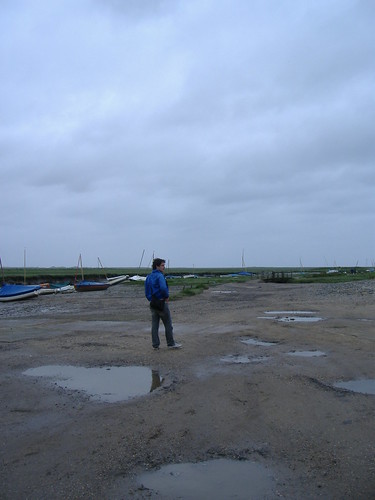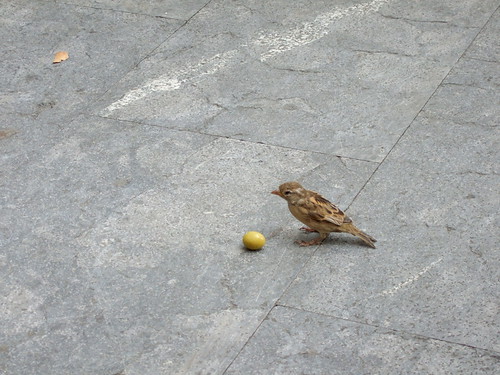...the most deranged paper I ever gave and, for that matter, ever will give. This was from a conference at Sheffield Hallam a couple of years ago, and it was my first (speaking) conference outing away from UEA. I still maintain that there is something very interesting in it, but to say that the paper itself was, well, over-ambitious would be a bit of an understatement.
Reason for posting this? Well, I was just browsing through old saved work and I thought I'd like to share it. Incidentally, if anyone reading this is organising a conference on ghost stories, genre in the Thirties, landscape art, allegory, English Surrealism, 'psychoanalytic and phenomenological critiques of perception', Rex Warner, Edward Upward, writing and political commitment...(list continues for another twenty-five minutes)...psychogeography or the quest theme in 20th century fiction, just leave me a comment and I'll get back to you!
***
“I rather imagine we’re meant to see the whole thing”:
Inherited Supernatural Landscapes in Allegorical Fiction and Surrealist Painting
The ghost stories of M.R. James have usually been classified as an aside to the development of the English literary modernism with which they coincided. A closer study of the flat, expansive landscapes employed by James, however, will reveal a kind of space that is familiar to students of both English Surrealist painting and 1930s fiction. It is my intention to show how these unsettling spaces shift from the sequestered realm of the supernatural tale into the painting of Paul Nash and Tristram Hillier and the supposedly “allegorical” fiction of Rex Warner via the juvenilia of Edward Upward and Christopher Isherwood. In so doing, I hope to raise questions about the usefulness of a classificatory agenda that insists on both a very narrow reading of Warner’s novels The Wild Goose Chase and The Aerodrome and a limited conception of precisely what being an “English Surrealist” entailed.
The composition of James’ landscapes conveys a sense of the visual sinister: in the stories, a strong emphasis is placed on perspective and acts of looking. Invariably, these empty scene are penetrated by an overdetermined, monstrous object:
The light was obscure, conveying an impression of gathering storm […] On this bleak stage at first no actor was visible. Then, in the distance, a bobbing black object appeared: a moment more, and it was a man running.[1]
Isherwood and Upward’s “Mortmere” tales (written in the 1920s, but manifestly “Thirties” in their outlook) also concern themselves with the anxiety that exposed spaces can instigate. The foreboding atmospheres that one encounters in them have a Jamesian tone, but eventually lead back to a corporeal explanation. In their lambasting of the English squirearchy, the stories have often been dismissed- unfairly- as jejune travesties or, at best, short political allegories. This paper contends that they are texts on the threshold of Surrealism “proper” and are, as such, matched in spirit by the early landscapes of Nash and Hillier. In their description of glum marshland scenes they also anticipate the desolate heaths and meadows encountered in Warner’s novels. The visual relationships proposed by all of these works imply near-identical anxious subjectivities. Using psychoanalytic and phenomenological critiques of perception I intend to demonstrate how it is possible to read unbounded spaces in order to contest received “generic” understandings of Thirties texts.
[1] M.R. James, “Oh Whistle, and I’ll Come to You, My Lad”, Ghost Stories (London: Penguin, 1994), pp82-83.
***
The best thing is that, by reviving this for a blog, I've realised the critical instrument- Todorov's theory of the Fantastic- that might actually have made this paper cohere. Double d'oh.
Tuesday, 22 April 2008
Abstract for...
Subscribe to:
Post Comments (Atom)



No comments:
Post a Comment